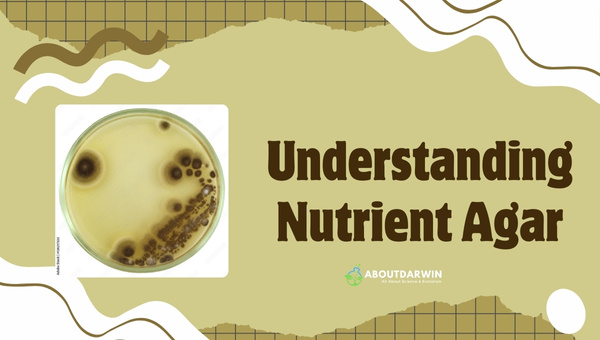Physical Address
304 North Cardinal St.
Dorchester Center, MA 02124
In microbiology, few mediums are as crucial as nutrient agar, a gelatinous substance that supports the growth of various microorganisms. Its composition, which includes beef extract, peptone, and agar, provides essential nutrients for microbial life.
This seemingly simple medium plays a pivotal role in scientific research, enabling the isolation and observation of bacteria.
As you explore the fascinating world of nutrient agar, you’ll uncover its significance in experiments ranging from antibiotic resistance studies to basic educational demonstrations. The secrets hidden within these petri dishes may just lead to groundbreaking discoveries.
Contents
Nutrient agar microbiology is a key culture medium in microbiology, specifically designed for cultivating and examining microorganisms. Its nutrient-rich composition supports the growth of a wide variety of non-fastidious bacteria and fungi, making it a versatile tool in laboratories.

The nutrient agar meaning lies in its role as a general-purpose medium, enabling researchers to study microbial behavior effectively.
This medium is indispensable in laboratory research, education, and quality control due to its ability to foster microbial growth and facilitate the analysis of diverse microorganisms.
The composition of nutrient agar plays a vital role in its effectiveness as a growth medium for microbial studies. It is widely used in laboratories to cultivate and analyze various bacterial species due to its simplicity and versatility.
Below are the components of nutrient agar and their functions in fostering microbial growth:
The synergy among the components of nutrient agar creates an ideal medium for supporting bacterial growth and enabling various microbiological studies.
This table outlines the precise composition of nutrient agar, which can be prepared by accurately measuring and mixing these ingredients.
| Ingredient | Quantity (per Liter) |
|---|---|
| Beef Extract | 3 g |
| Peptone | 5 g |
| Agar | 15 g |
| Distilled Water | 1000 ml |
Its importance in microbial research highlights the significance of each component in fostering microbial growth.
Nutrient agar is a versatile microbiological medium with various specialized formulations designed to support different research and cultivation needs.
These types of nutrient agar can be customized to enhance growth conditions, selectivity, and specific microorganism requirements.
Nutrient agar comes in multiple variations, each designed to meet specific research requirements, support different microorganism growth, and facilitate scientific investigations across various disciplines like microbiology, medicine, and biotechnology.
Standard Nutrient Agar – A general-purpose medium supporting growth of a wide range of non-fastidious organisms, containing peptone, beef extract, sodium chloride, and agar. It provides essential nutrients for bacterial and fungal cultivation across various research settings.
Enriched Nutrient Agar – This variant can be supplemented with additional components like serum or blood to support the cultivation of more demanding microorganisms. By adding extra nutrients, researchers can expand the medium’s capabilities for more specialized microbial studies.
Selective Nutrient Agar Variants – Different nutrient agar types are designed for specific microorganism groups:
| Agar Type | Specific Microorganism Focus |
|---|---|
| Blood Agar | Supports growth of most bacteria |
| Chocolate Agar | Supports Haemophilus and Neisseria species |
| MacConkey Agar | Supports gram-negative bacteria |
| Sabouraud Agar | Specialized for fungi, yeasts, and moulds |
Tissue Culture Grade Agar – Used specifically for plant growth and biotechnological research purposes, this specialized nutrient agar serves unique cultivation needs beyond traditional microbiological applications.
Also Read: Earth’s Geomagnetic Reversal: The Phenomenon of Polarity Flip
Nutrient Agar is a fundamental microbiological medium with several key principles that support microbial growth and cultivation:
Nutrient agar is a commonly used medium in microbiology labs for culturing microorganisms. Its preparation involves simple, precise steps to ensure the medium is sterile and suitable for microbial growth.
Required Materials
Step-by-Step Guide on How to Prepare Nutrient Agar Media?
By following these steps, you can create a nutrient-rich medium for cultivating microorganisms, essential for various microbiological experiments and analyses.
Also Read: Acid-Fast Stain Revealed: Unveiling Microbial Secrets
Nutrient agar is a fundamental medium widely used in microbiology for cultivating a variety of microorganisms. Its formulation provides essential nutrients that support the growth of non-fastidious bacteria and fungi, making it an invaluable tool in laboratories for research, education, and clinical diagnostics.
The simplicity and effectiveness of nutrient agar allow it to be utilized in various applications, including purity testing and routine cultures. Below is a detailed overview of its uses, composition, and preparation.
Overall, nutrient agar’s versatility makes it a cornerstone in microbiological laboratories worldwide.
Also Read: Mastering Polymerase Chain Reaction: Principle & Application
While nutrient agar is popular, alternatives like Sabouraud Agar or MacConkey Agar can be used depending on the specific type of microorganism you’re trying to grow.
Generally, handling nutrient agar isn’t unsafe. However, it’s crucial to adhere to all laboratory safety guidelines as the grown microbes could potentially be harmful.
Yes, technically you can. But remember, the need for precise measurements and sterilization makes this challenging without proper laboratory equipment.
Prepared plates can typically be stored for around two weeks in a refrigerator before use. But once there are signs of moisture loss or contamination, discard them immediately.
Nutrient agar supports the growth of various bacteria like Escherichia coli, Staphylococcus aureus, Pseudomonas aeruginosa, Klebsiella pneumoniae, and Yersinia pestis. It is a versatile, non-selective medium suitable for many microorganisms.
Nutrient agar plays a vital role in microbiology, serving as a fundamental medium for cultivating a wide variety of microorganisms. Its composition, which includes beef extract, peptone, and agar, provides essential nutrients necessary for microbial growth.
The significance of nutrient agar extends beyond simple laboratory experiments; it is crucial for advanced research, including antibiotic susceptibility testing and isolation of pure cultures.
This versatile medium not only supports scientific discovery but also enhances our understanding of microbial life and its applications in various fields.